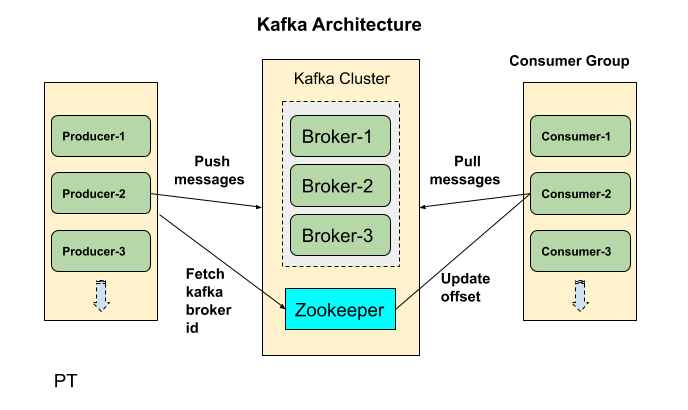Kafka vs RabbitMQ
RabbitMQ
- supports :
- AMQP : Advanced Message Queuing Protocol
- MQTT : MQ Telemetry Protocol
- STOMP : Streaming Text Oriented Messaging Protocol
- is known as a hybrid broker
- uses smart broker/dumb consumer model
Kafka
- provides higher throughput, built-in partitioning, replication, and inherent fault-tolerance
There are 2 async messagin patterns :
Message Queue
- a creating app sends a msg to queue. When the consuming app is ready, it just connects to the queue and retrieves the msg, removing it from the queue.
- several consuming apps can exist, each message is only consumed by one.
Publish/Subscribe (pub/sub)
- allows producers to publish msg’s which can be consumed by multiple consumer.
- if consuming apps are interested, they just subscribe to a channel
- used when a msg or event must trigger several actions
- unlike the message queue, pub/sub assures that consuming apps rcv msg’s in the same order as messaging system received them.
RabbitMQ Architecture
- consists of
- producers
- exchanges
- queues
- consumers
queues
msg |---->
producer -----> exchange --|----> consumers
|---->
or other
exchanges
- queue is a sequential data structure:
- producers add to the end
- consumers get data from the top
- FIFO
- msg exchange determines routing
- 4 exchange types:
- direct
- can directly target msg’s to a particular queue

direct exchange
- can directly target msg’s to a particular queue
- fanout
- route msg’s to all available queues

fanout exchange
- route msg’s to all available queues
- topic
- header
- direct
- 4 exchange types:
Kafka Architecture
- consists of
- producers
- consumers
- clusters
- brokers
- topics
- partitions
producer --------> cluster -------> consumer

Use cases
- Rabbit MQ
- complex routing - route msg’s among miltiple consuming apps, such as in a microservice architecture
- legacy applications

- Kafka
- high-troughput activity tracking
- stream processing
- event sourcing
- log aggregation
